Few materials carry as much mystique as Damascus steel in the world of blades and metal artistry. Its swirling patterns, legendary sharpness, and historical aura captivate enthusiasts and collectors alike. Yet, in modern times, pattern-welded steel has emerged as its spiritual successor, leading to an often-heated debate: Damascus Steel vs. Pattern-Welded Steel.
This article provides a comprehensive overview of everything you need to know, including origin stories, metallurgical composition, performance differences, pricing, and more.
What Is Damascus Steel?
Damascus steel is traditionally a type of steel used in the Middle East, known for its distinctive wavy pattern and exceptional strength. However, it’s no longer produced in its original form, as the exact process was lost centuries ago.
Characteristics include:
-
Wavy or watery patterned surface
-
High-carbon content
-
Exceptional sharpness and toughness
-
Historical use in swords and daggers
Damascus steel was originally made from Wootz steel, a high-carbon alloy from India.
The Origins and Mythos of Damascus Steel
The name "Damascus" may come from the city in Syria, where such blades were traded. However, the actual material originated from imported Wootz ingots.
Legends suggest:
-
Blades could slice through rifle barrels
-
They could remain razor-sharp after years of use
-
Blacksmiths guarded the secret fiercely
Though these stories are largely exaggerated, they contributed to the mystique surrounding Damascus.
What Is Pattern-Welded Steel?
Pattern-welded steel is a modern forging technique that mimics the aesthetic of historical Damascus steel. It’s created by:
-
Layering different types of steel
-
Welding and folding them repeatedly
-
Etching the surface to reveal a patterned design
Unlike ancient Damascus, pattern-welding is not a lost art. It’s practised widely today among custom knifemakers and blacksmiths.
🗓 Historical Timeline: Damascus vs. Pattern-Welded
| Period | Damascus Steel | Pattern-Welded Steel |
|---|---|---|
| ~300 BC | Origin of Wootz in India | Iron Age examples found in Europe |
| 1100s–1700s AD | Damascus blades' peak usage | Early Viking swords were pattern-welded |
| 1800s | Wootz/Damascus process lost | Pattern-welding continues |
| Modern Day | Only modern reproductions | Widely used in custom blades |
How They’re Made: The Metallurgical Breakdown
Damascus (Historical):
-
Made from crucible Wootz steel
-
The slow-cooling method created banded carbide patterns
-
Natural alloy segregation caused visible patterns
Pattern-Welded:
-
Alternating hard and soft steels
-
Forge welded at high temps
-
Folded multiple times to create layers
-
Etched to reveal patterns
While the visual effect may look similar, the internal structures differ dramatically.
Visual Patterns and Aesthetics
Both steels are prized for their appearance, but here’s how they compare:
| Feature | Damascus Steel | Pattern-Welded Steel |
|---|---|---|
| Pattern Origin | Natural alloy banding | Etched layered designs |
| Consistency | Naturally random | Artistically controlled |
| Popular Patterns | Watered, Wavy | Ladder, Twist, Raindrop |
Pattern-welded blades offer customisation options, which modern artisans love.
Strength and Performance Comparison
Damascus steel had a reputation for being incredibly strong, but modern steels outperform it in many ways.
Pattern-welded steel allows smiths to:
-
Blend high-carbon steel (for sharpness)
-
With tough, springy steels (for durability)
This gives pattern-welded steel an advantage in predictable performance. Damascus, while tough for its time, can't compete with today's metallurgical standards.
Edge Retention and Sharpness
Ancient Damascus was known for:
-
Holding an edge long-term
-
Slicing cleanly through thick materials
Modern pattern-welded blades:
-
Offer superior edge retention
-
Benefit from high-carbon layers like 1095 or VG-10
In practice, edge performance depends more on the specific steels used in pattern welding rather than the technique alone.
Corrosion Resistance
Damascus blades, made from high-carbon Wootz, were not corrosion-resistant.
Pattern-welded blades can:
-
Use stainless steels like 15N20 or 304
-
Be treated with protective finishes
-
Outperform ancient blades in wet or humid conditions
Modern knives outperform traditional ones when it comes to resisting rust.
Modern Uses in Knives and Tools
Today, pattern-welded steel is used in:
-
Custom chef knives
-
Tactical blades
-
Hunting knives
-
Decorative tools
Authentic Damascus blades are limited to museums and collectors. If you want real-world performance, pattern-welded is the way to go.
Price and Value Differences
| Feature | Damascus (Antique) | Pattern-Welded (Modern) |
|---|---|---|
| Rarity | Extremely rare | Common among custom makers |
| Average Cost | Tens of thousands | $100–$1000+ depending on quality |
| Collector Value | High | Moderate to High |
Pattern-welded steel offers better bang for your buck if you plan to actually use the blade.
Common Misconceptions
-
All patterned steel is Damascus – False. Most are pattern-welded.
-
Damascus steel is still made today – False. It’s replicated, not recreated.
-
Pattern-welded is weaker – False. It’s usually stronger.
Understanding these myths helps you make an informed decision.
How to Identify Authentic Damascus or Pattern-Welded Steel
| Indicator | Damascus Steel | Pattern-Welded Steel |
|---|---|---|
| Pattern depth | Inside metal layers | Often etched on the surface |
| Source | Museum pieces, antiques | Custom shops, knife makers |
| Test | Acid etching | Layer count, hardness tests |
If you're unsure, ask the maker for the exact process used.
Which Is Better? Practical Use Cases
| Use Case | Better Option |
|---|---|
| Knife Collecting | Damascus Steel (for rarity) |
| Everyday Carry | Pattern-Welded Steel |
| Culinary Tools | Pattern-Welded (easy care) |
| Survival Knives | Pattern-Welded |
Unless you’re a collector or historian, pattern-welded steel wins in nearly all real-world applications.
FAQs
1. Is Damascus steel stronger than modern steels?
No. While it was strong historically, modern metallurgy outperforms ancient Damascus.
2. Can I buy real Damascus steel?
Only antiques or museum pieces are considered "real." Modern versions are pattern-welded replicas.
3. What steels are used in pattern-welding?
Common pairs include 1095 + 15N20, or 52100 + 410 stainless.
4. Do all Damascus knives rust?
Yes, if they're made from high-carbon steel. Modern blades can be stainless, though.
5. Why is pattern-welded steel still called Damascus?
It’s a marketing term that references the old look, not the process.
6. Where can I learn more about modern forging?
Check out the American Bladesmith Society for detailed resources.
Conclusion:
If you're looking for performance, artistry, and value, pattern-welded steel is the winner. It blends form and function while paying homage to the legendary Damascus steel of old.
However, for the enthusiast, nothing replaces the allure of true Damascus steel—a material from a bygone era that still sparks curiosity and awe.


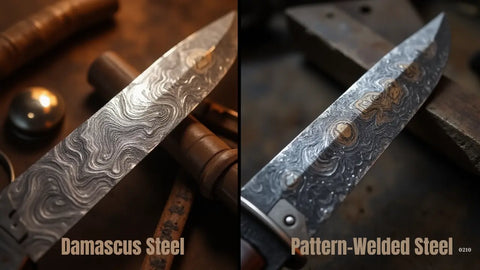

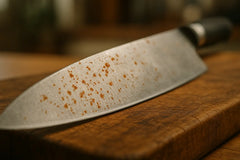
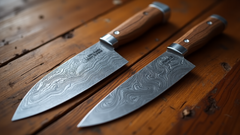
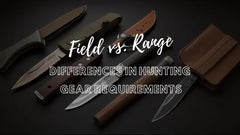



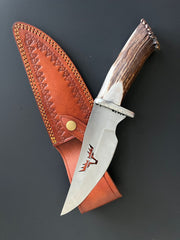
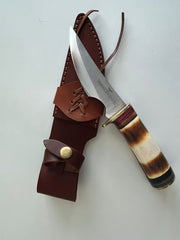

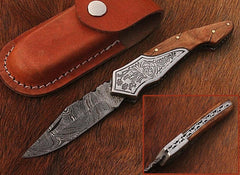
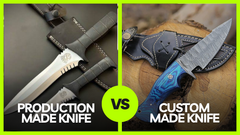



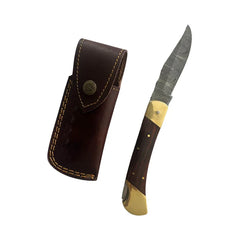

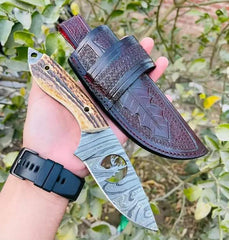

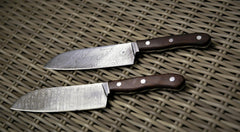
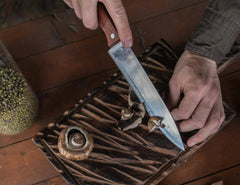

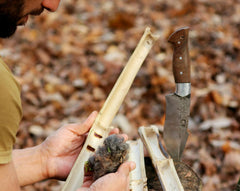





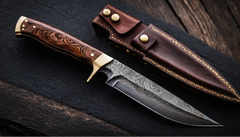

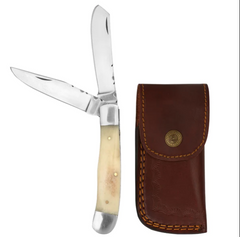
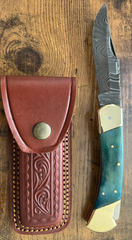
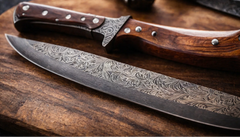

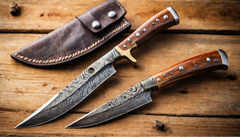


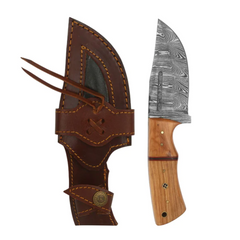
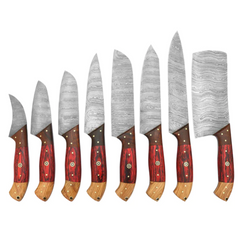


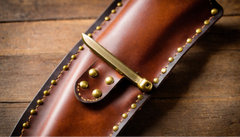
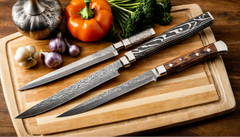
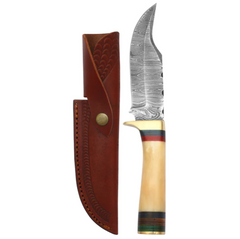

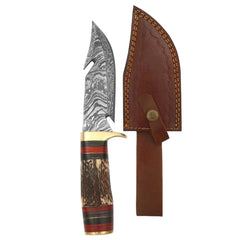

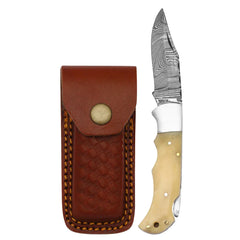

Comments